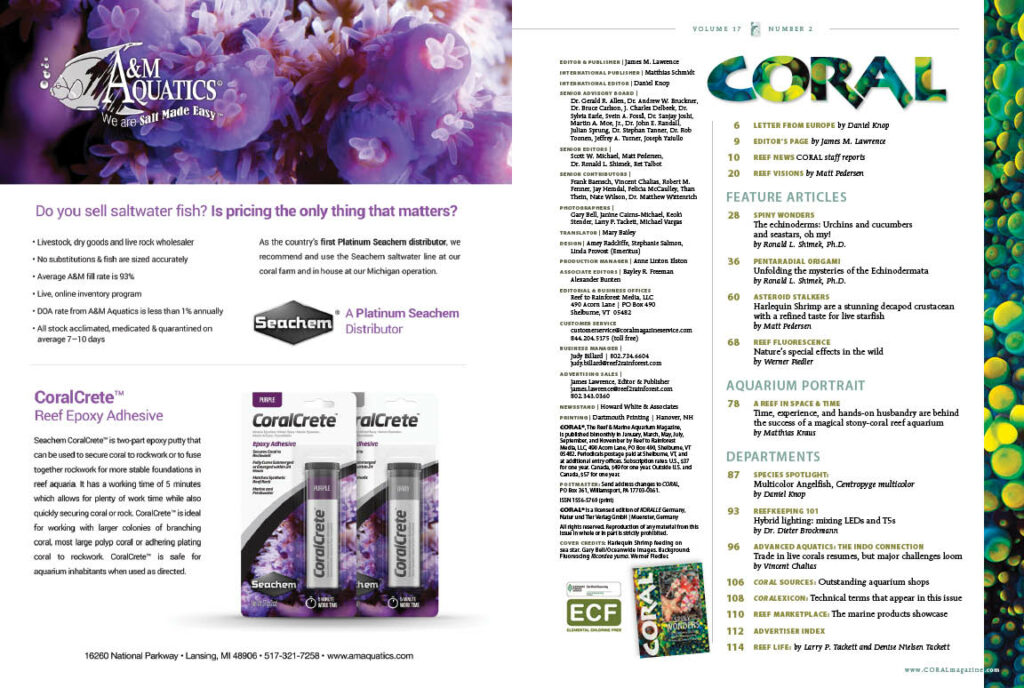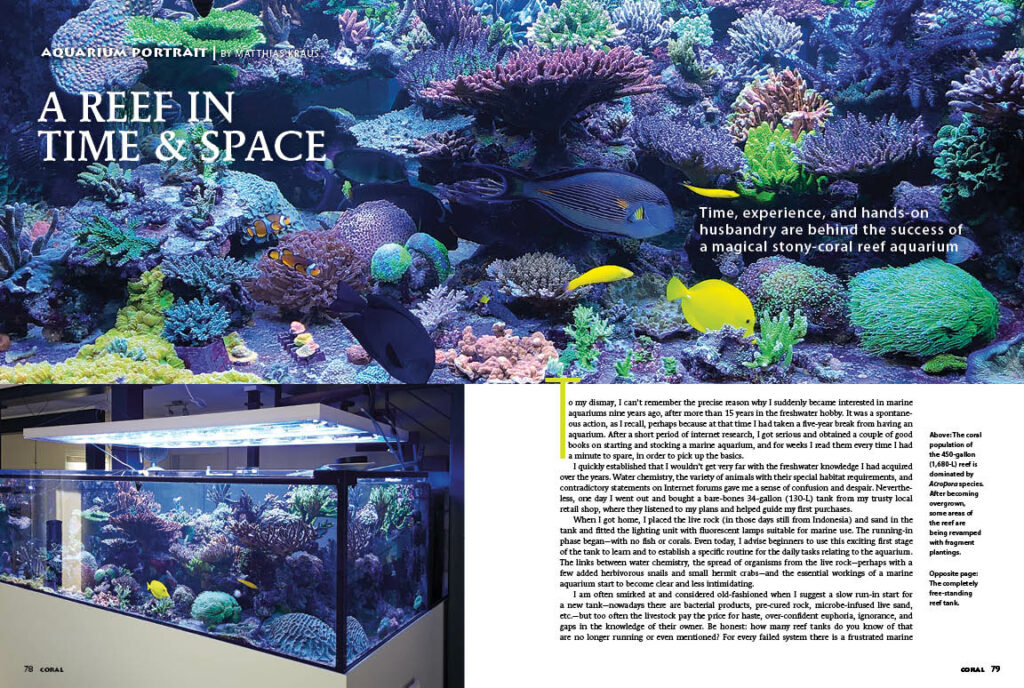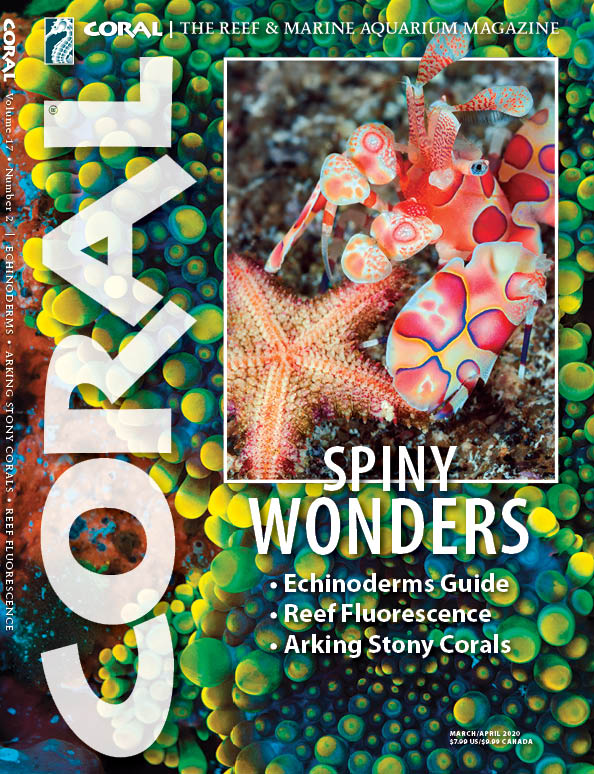
Cover of CORAL Magazine Volume 17, Issue 2 – SPINY WONDERS – March/April 2020. On the cover: Harlequin Shrimp feeding on a sea star. Gary Bell/Oceanwide Images. Background: Fluorescing Ricordea yuma. Werner Fiedler.
Go to the Digital Edition—Now Live for Immediate Reading
The March/April 2020 Issue of CORAL is printed and on its way from New Hampshire to subscribers and leading local retail shops—on sale March 5th, 2020, at the best marine aquarium retail stores everywhere.
Readers of the Digital Edition can have immediate access—just log in here: CORAL DIGITAL EDITION
Paid subscribers can log in with their email addresses for instant access. The CORAL Digital version is available for desktop and laptop computers, as well as smartphones, tablets, and Kindle readers. To gain access to the current issue and a deep archive of back issues, become a subscriber by following this link:
SUBSCRIBE & SAVE
SUBSCRIBE and don’t miss this big issue—just $37 per year.
HEREWITH, a sampling of articles and opening pages for readers curious about what the issue will bring.
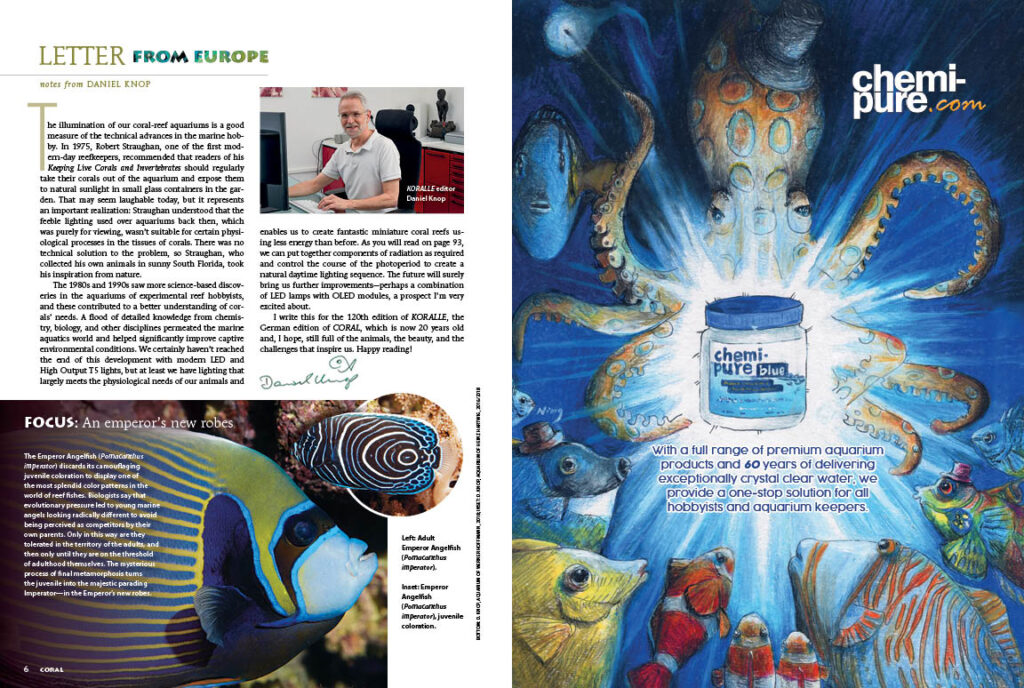
“I write this for the 120th edition of KORALLE, the German edition of CORAL, which is now 20 years old and, I hope, still full of the animals, the beauty, and the challenges that inspire us. Happy reading!” – Daniel Knop
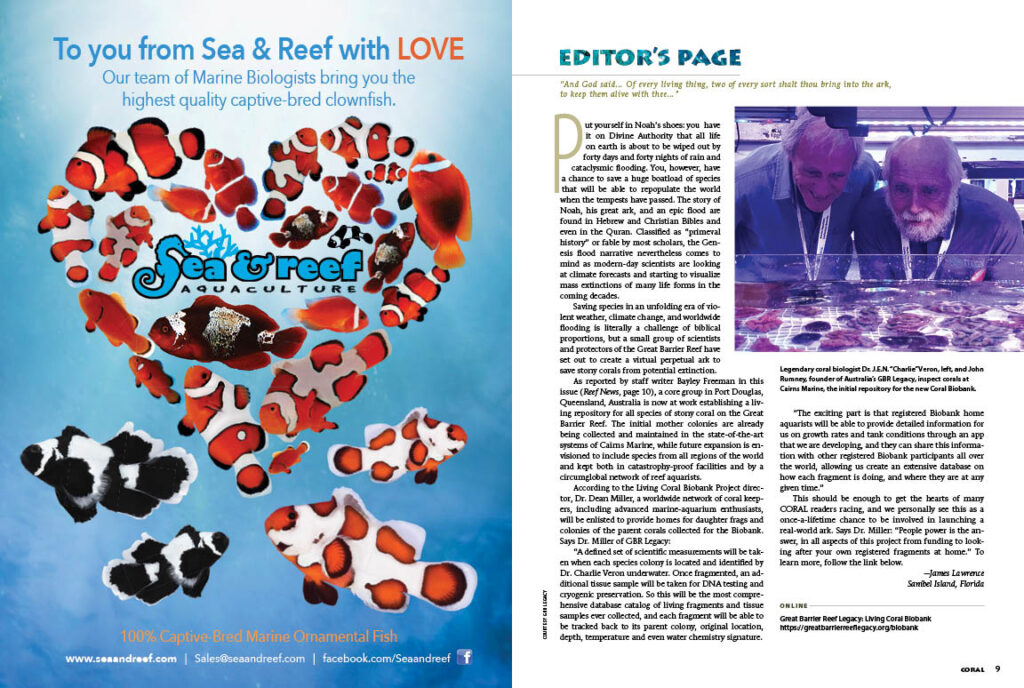
CORAL Editor James Lawrence points to a small group of scientists and protectors of the Great Barrier Reef who have set out to create a virtual perpetual ark to save stony corals from potential extinction.
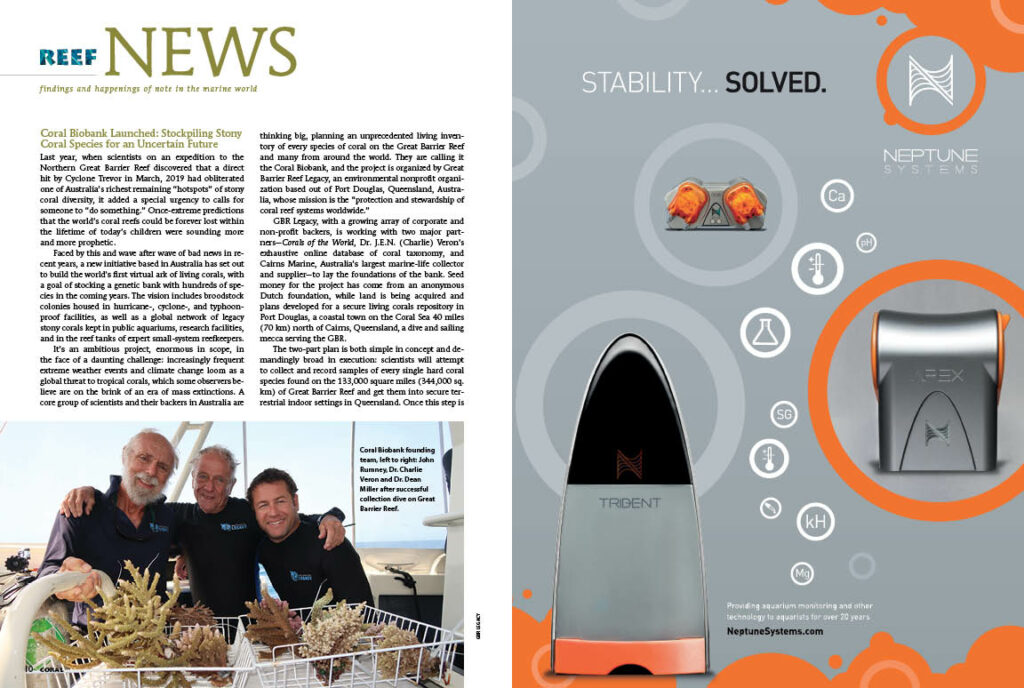
Reef News presents findings and happenings of note in the marine world. In this issue: Coral Biobank Launched: Stockpiling Stony Coral Species for an Uncertain Future; Palatable Plastics: Why Corals Ingest Faux Plankton; To Know Me, Know My Microbes (investigating the role that a coral’s microbial symbionts play in its adaptability).
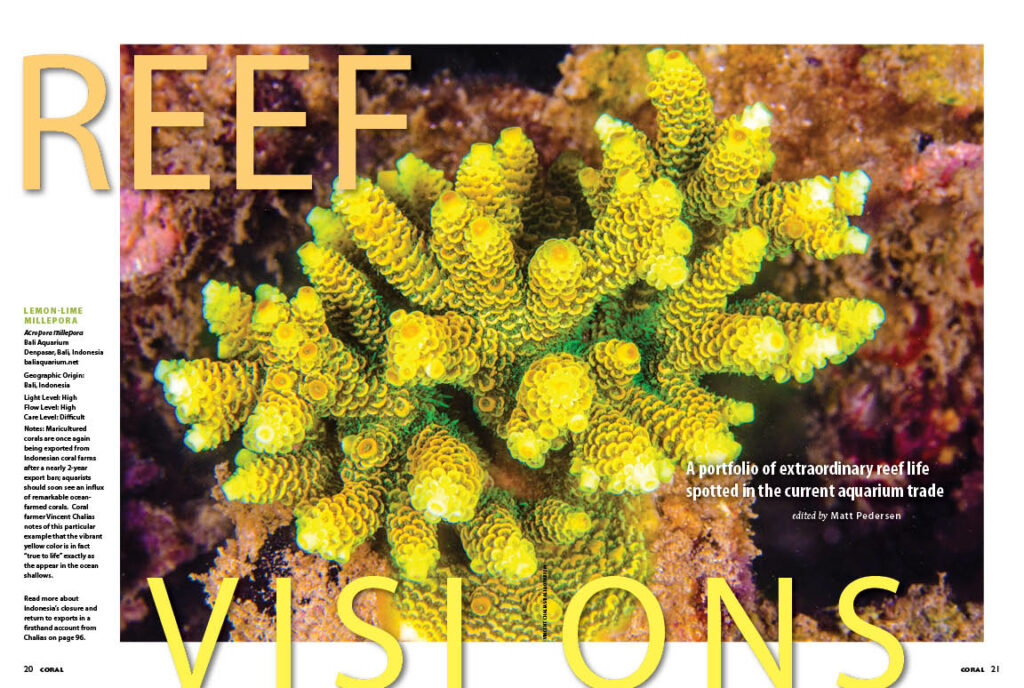
REEF VISIONS: A portfolio of extraordinary reef life spotted in the current aquarium trade. A stunning maricultured Lemon-Lime Acropora millepora from Bali Aquarium, photographed by Vincent Chalias, ushers in the return of Indonesian corals and leads off this issue’s highlights.
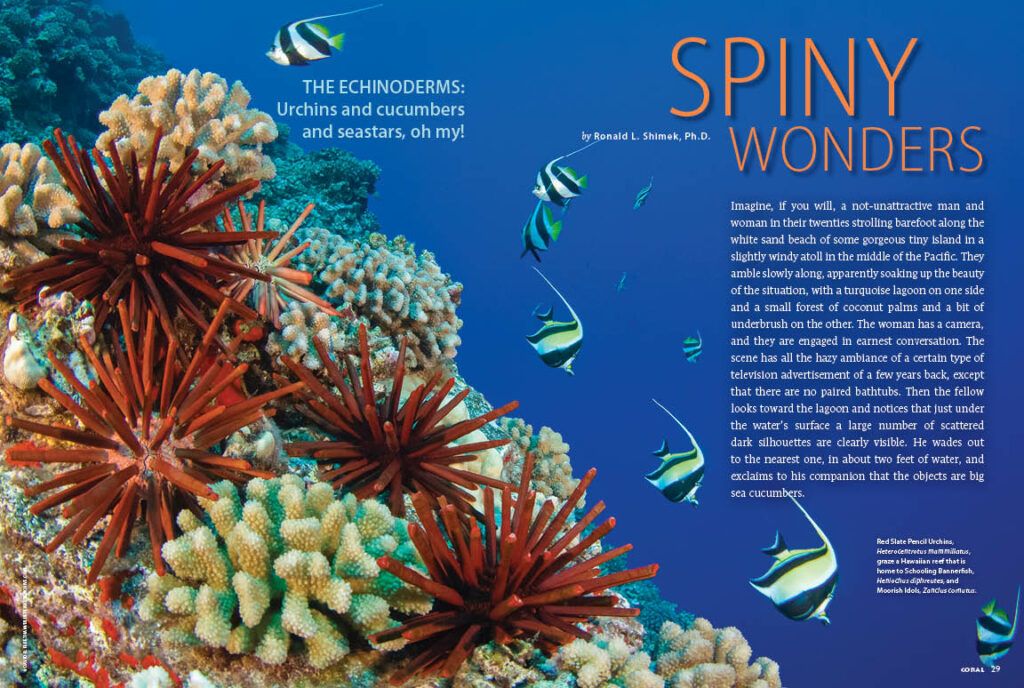
When we think about motile reef invertebrates, the iconic echinoderms quickly come to mind: the sea stars (Asteroidea), the brittle stars (Ophiuroidea), the sea urchins (Echinoidea), the feather stars (Crinoidea), and the sea cucumbers (Holothuroidea).
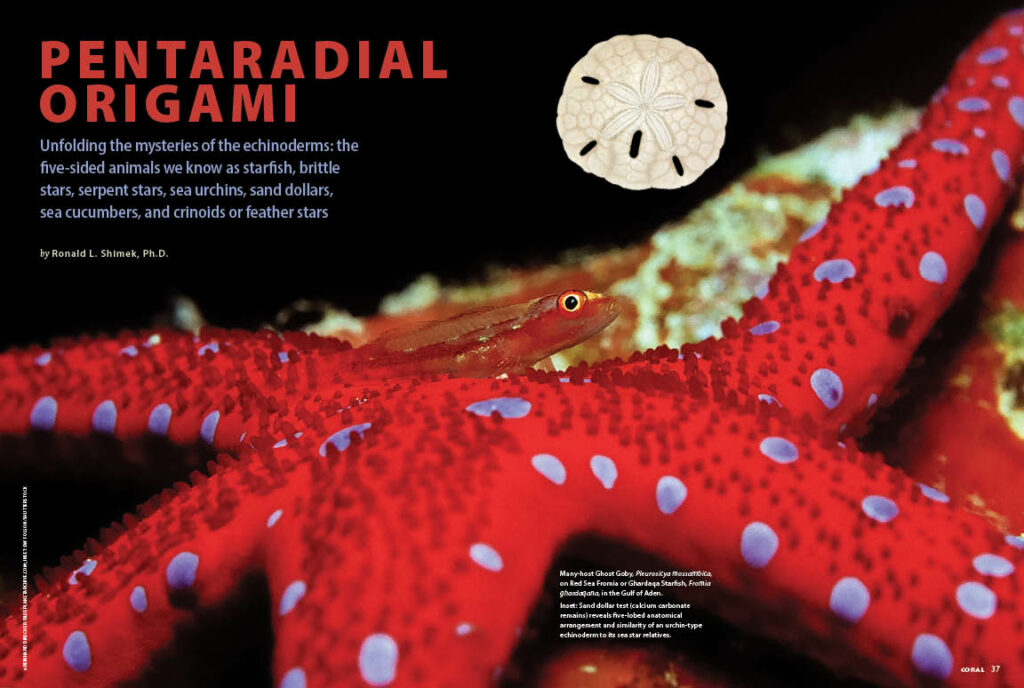
PENTARADIAL ORIGAMI, by Ronald L. Shimek, Ph.D., unfolds the mysteries of the echinoderms: the five-sided animals we know as starfish, brittle stars, serpent stars, sea urchins, sand dollars, sea cucumbers, and crinoids or feather stars.
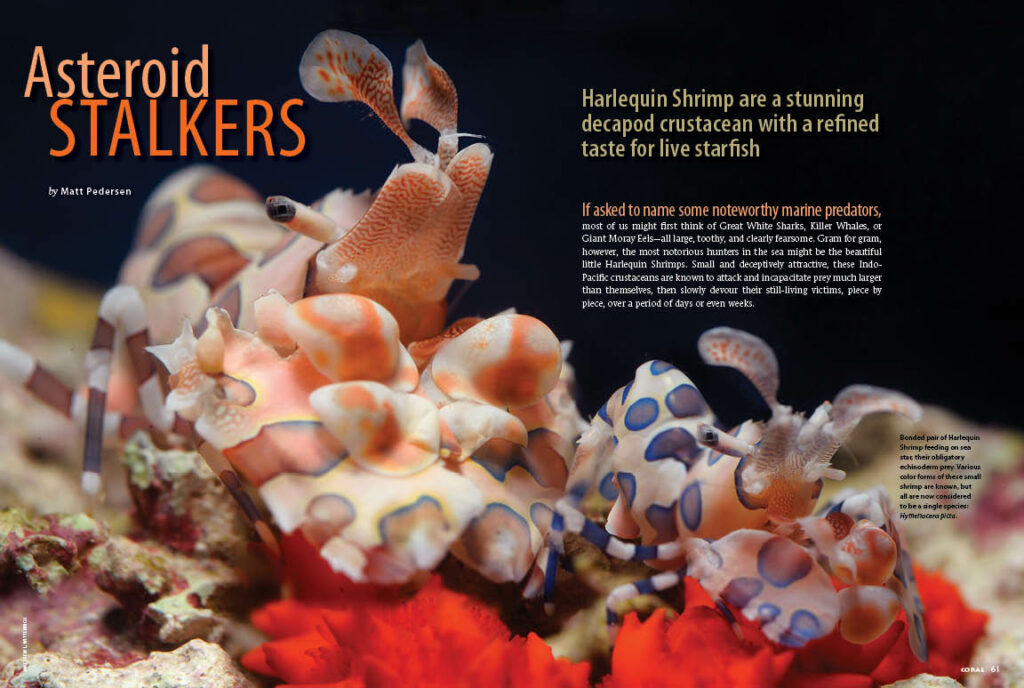
Gram for gram, the most notorious hunters in the sea might be the beautiful little Harlequin Shrimps. Matt Pedersen investigates the husbandry and breeding of Hymenocera picta.
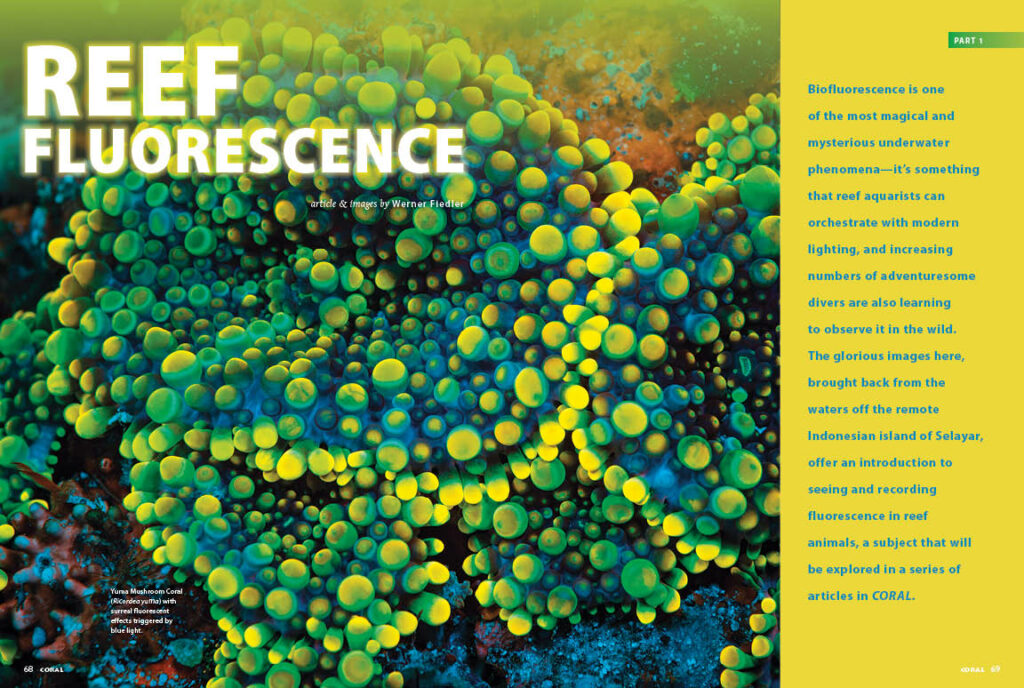
Travel with Werner Fiedler to experience wild reef fluorescence on the approximately 50-mile-long (80 km) island of Selayar, Indonesia.
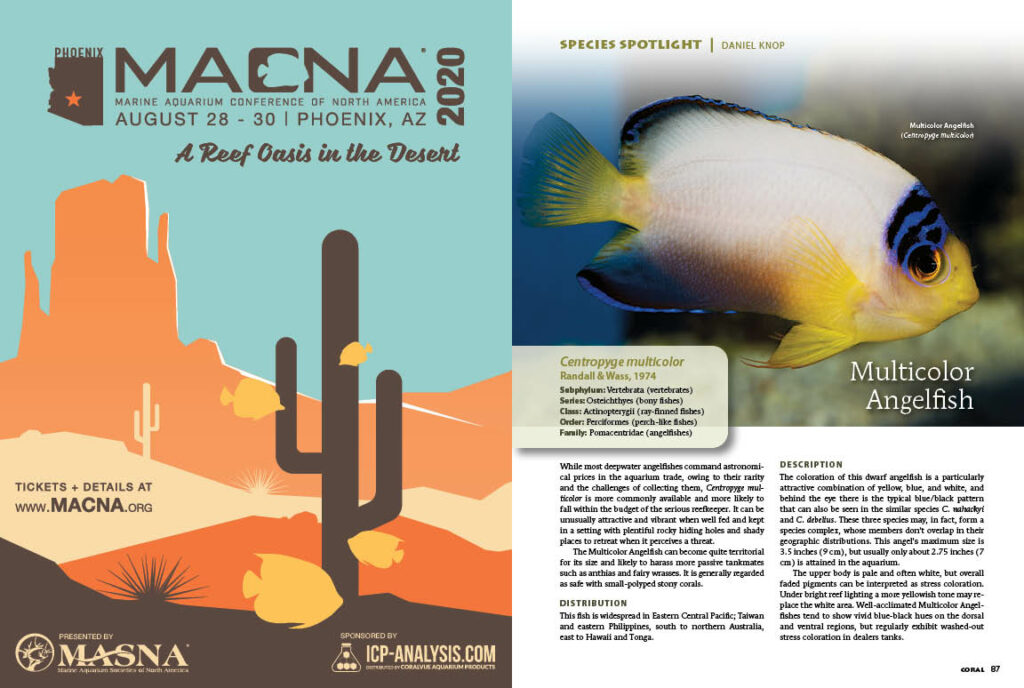
The Multicolor Angelfish, Centropyge mutlicolor, is perhaps the most affordable of the deepwater pygmy angels available in the reef aquarium hobby. Daniel Knop shares techniques to be successful with an angelfish that isn’t necessarily suited for the beginner.
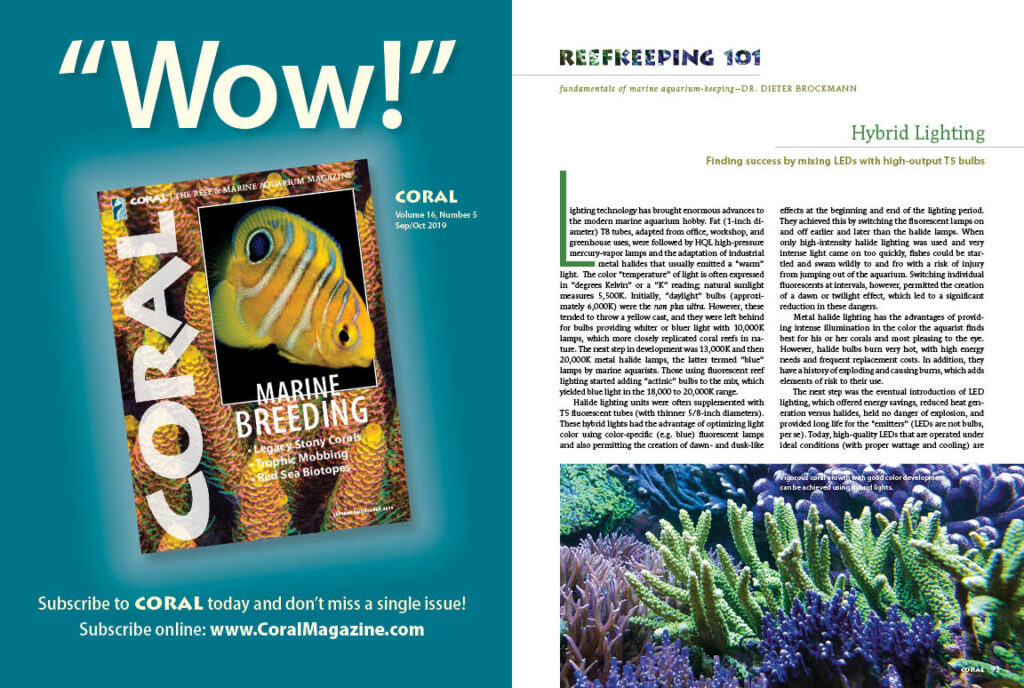
Hybrid Lighting may just be the ideal solution for lighting some reef aquariums, because it capitalizes on the unique benefits of both LED and T5 fluorescent aquarium lighting. Learn more in Daniel Knop’s REEFKEEPING 101 column.
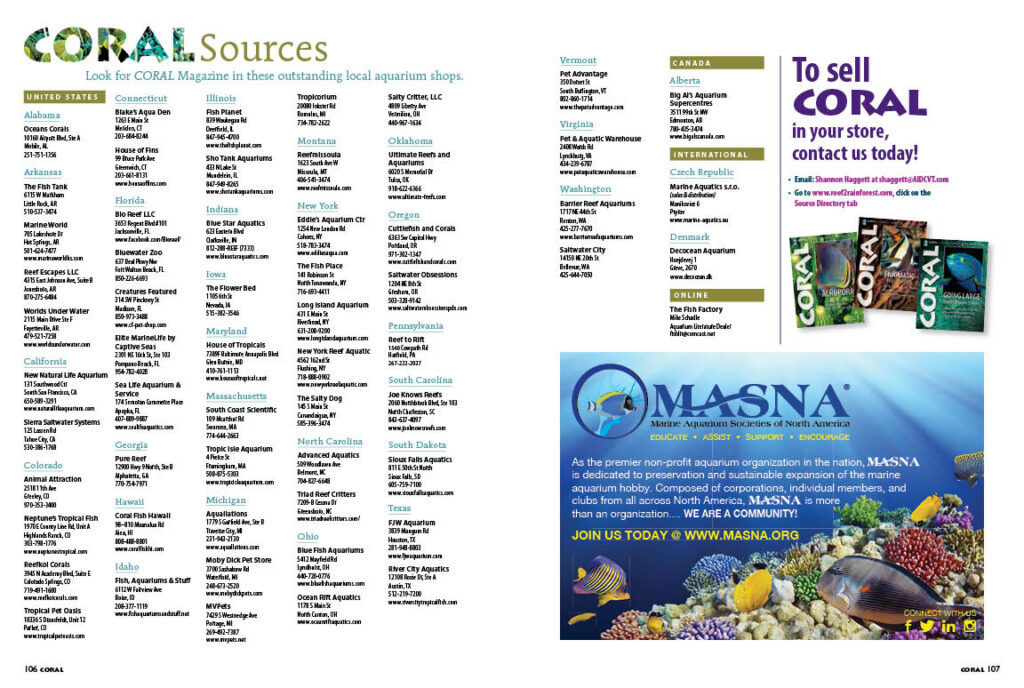
Find a directory of destination aquarium retailers with outstanding livestock, as well as your source for current and hard-to-find back issues of CORAL Magazine! You can view our sources list online anytime.
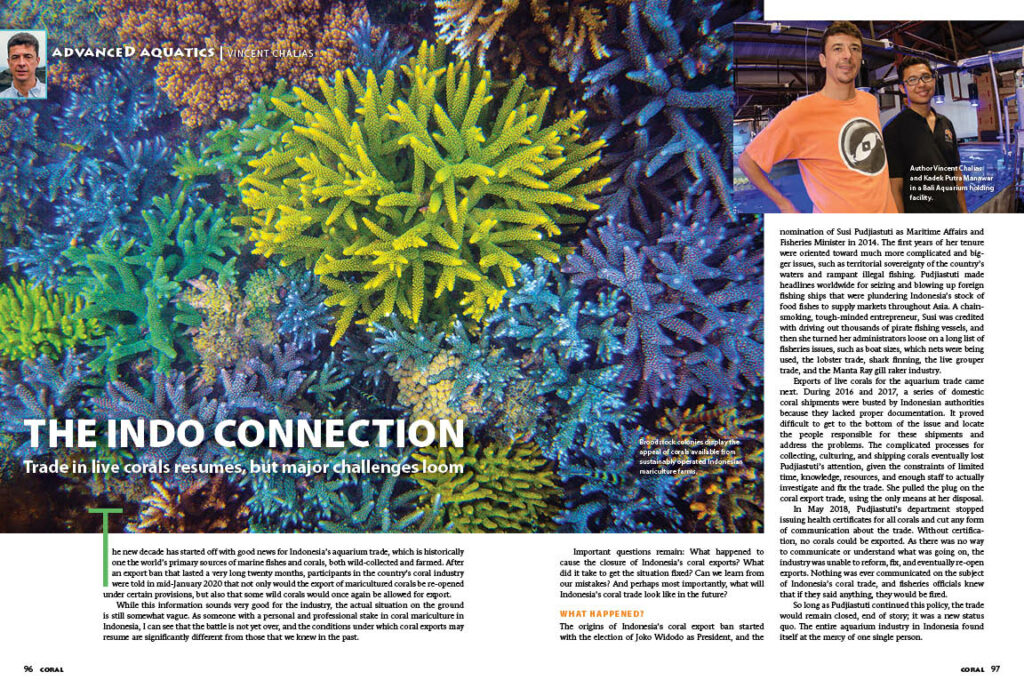
After 20 months of closure, coral farmers and exporters in Indonesia have finally been permitted to deliver a fresh influx of Indonesian corals to the world. Coral farmer Vincent Chalias of Bali Aquarium offers a cautious insight on the uncertain future of Indonesia’s trade in corals for the marine aquarium market.
• Already a subscriber? ACCESS the Digital Edition of this issue now!
CORAL Subscribers can log in with their email address and read the Digital Edition and App Editions immediately.
• SUBSCRIBE and never miss an issue of CORAL. Paid subscribers receive the classic Print Edition, as well as Free Access to the Digital Edition and CORAL Apps for mobile devices—via iTunes, Google Play for Android devices and the Amazon Kindle store.
